Although John Hutchinson “invented” the spirometer in 1846, his instrument was based on devices that had been invented and in some cases were in common use well before his time.
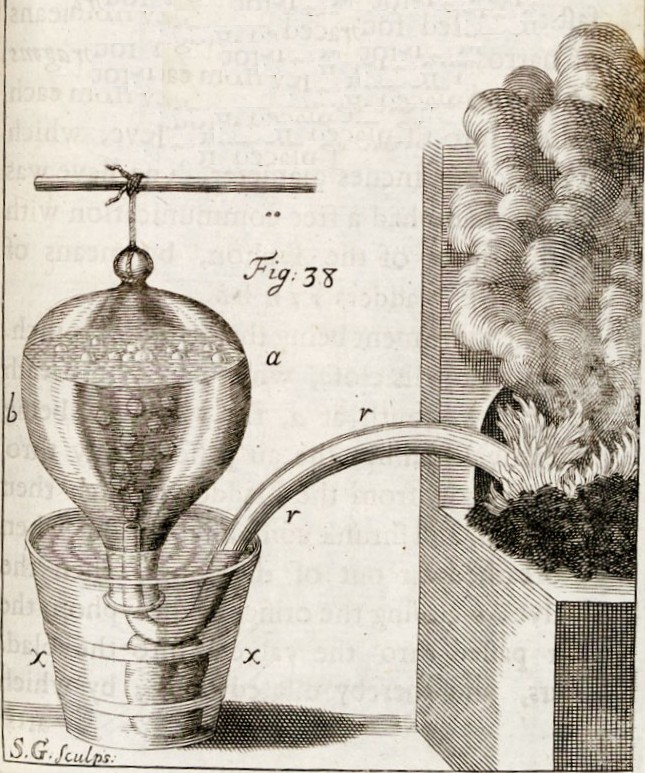
Pneumatic Trough, 1727. Stephen Hales devised the pneumatic trough in 1727 to investigate the gases involved in plant growth. The trough allowed gases to be collected in an inverted glass vessel filled with water,which sat in a reservoir of water. illustration found on Wikipedia.
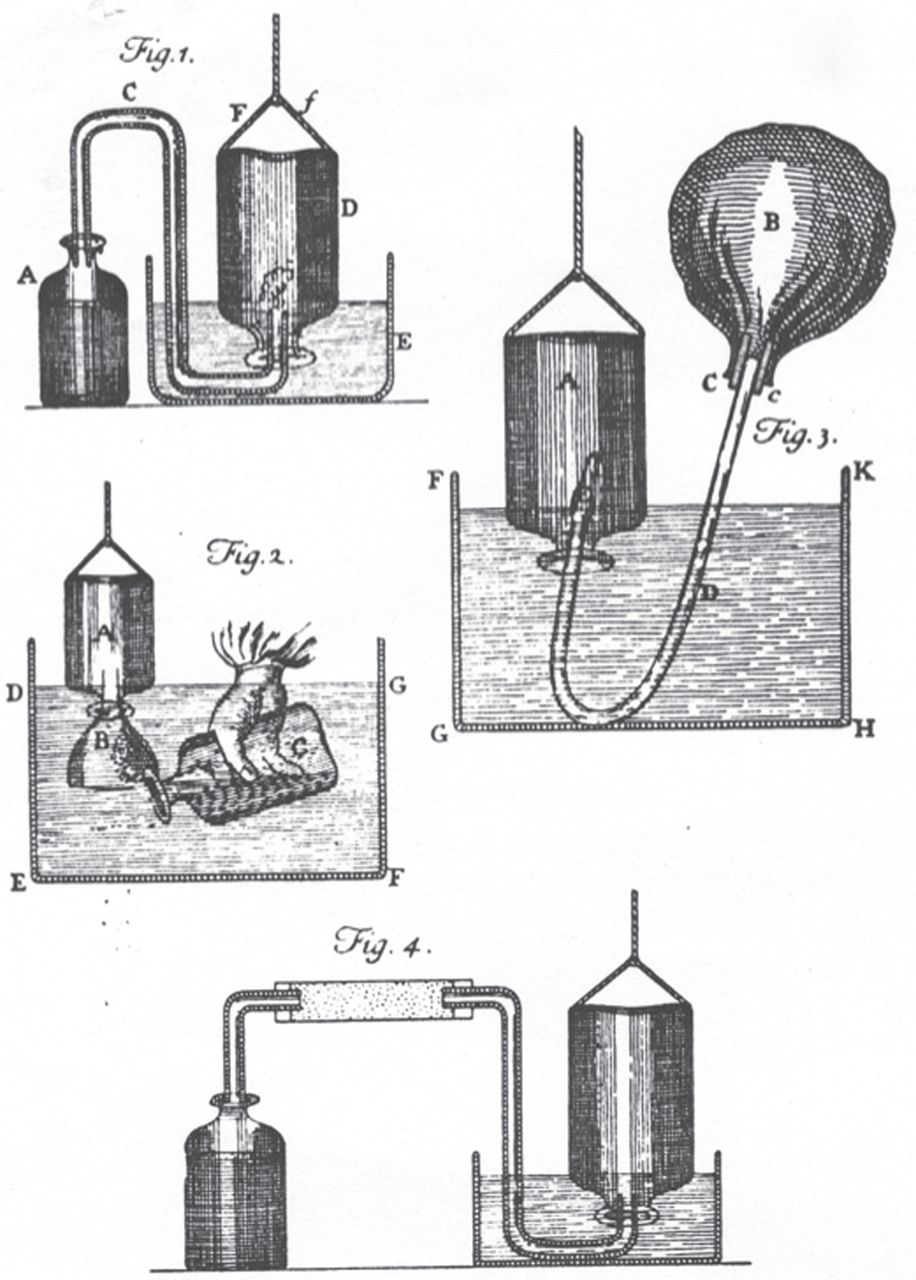
Pneumatic Trough, 1766. Henry Cavendish shows how pneumatic troughs are used. From Gases, God and the balance of nature: a commentary on Priestley (1772) ‘Observations on different kinds of air’ by
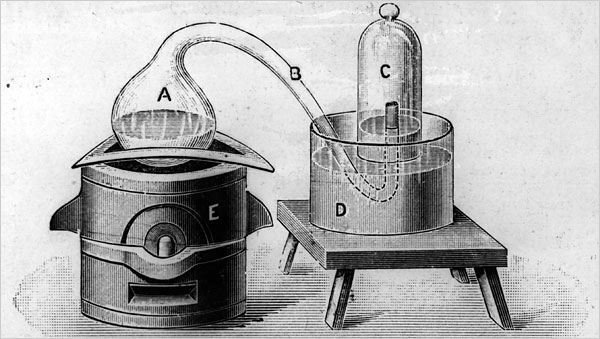
Pneumatic Trough, circa 1780. A pneumatic trough used by Joseph Priestley to isolate oxygen. From a book review “The Man Who Discovered Oxygen (Maybe) and Gave the World Soda Water” b
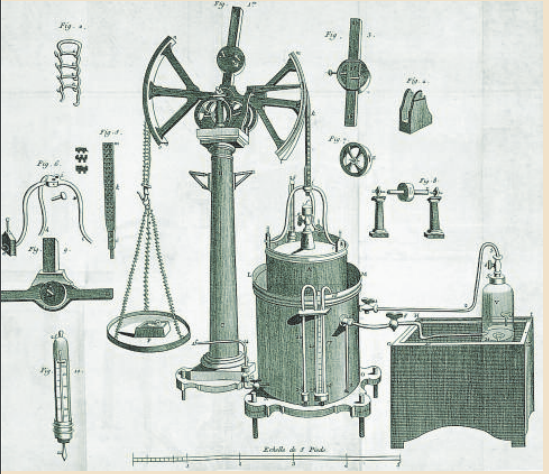
Lavoisier’s Gasometer, 1789. The gasometer used by Lavoisier in his research on combustion and “phlogiston” as illustrated in the Traité Élémentaire de Chimie, plate VIII, published 1789. Found on ACS.org.
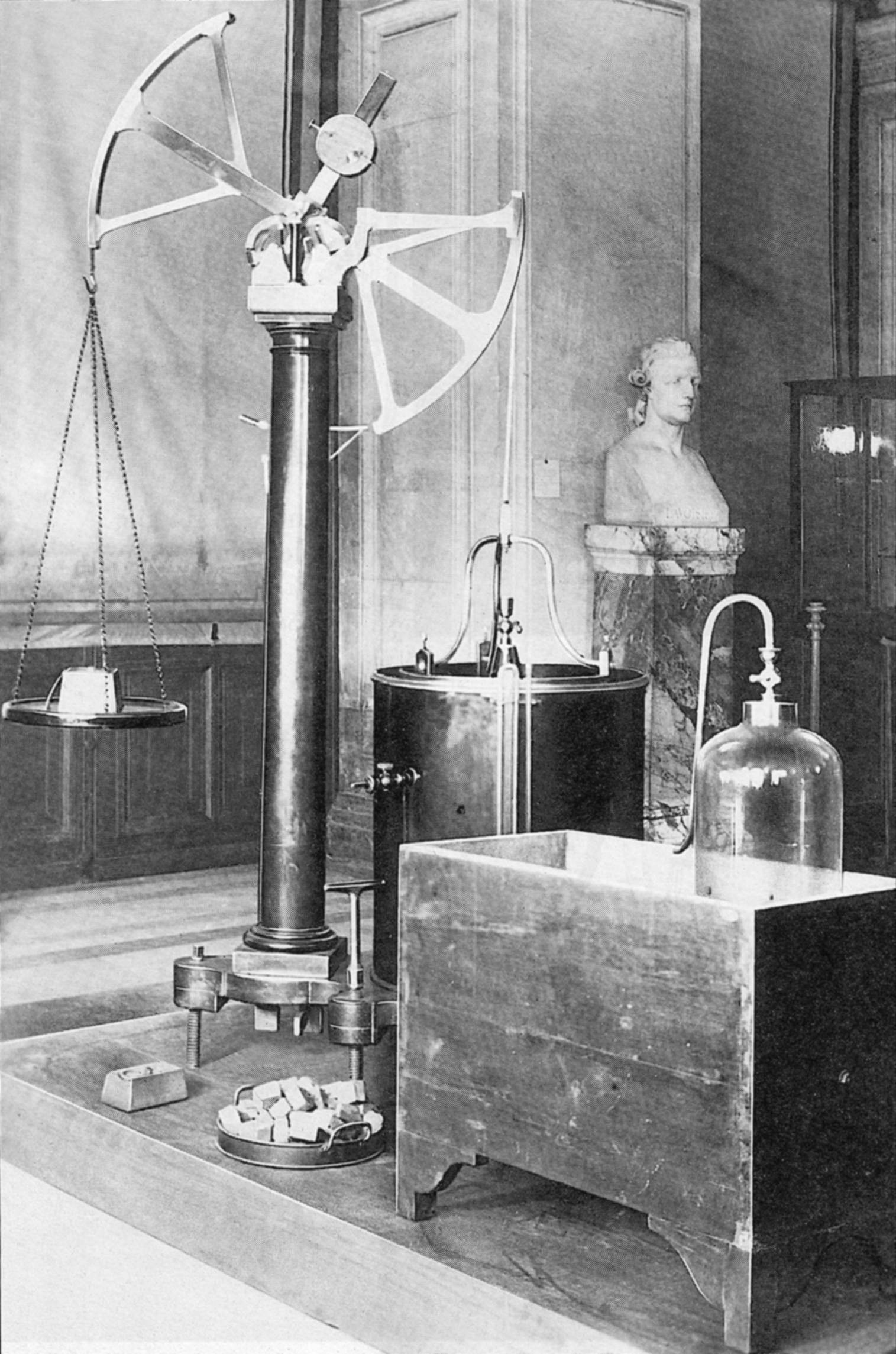
Lavoisier’s Gasometer, 1789. From Lavoisier Panopticon. Undated photo attributed to Musée des arts et métiers-CNAM, Paris, France.
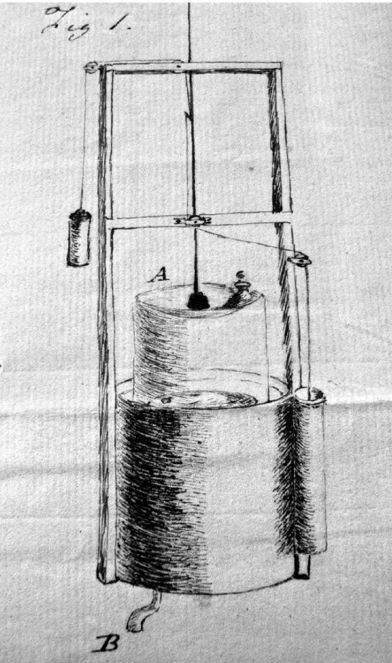
Watt-Beddoes Gasometer, 1795. Sketch by Dr. Thomas Beddoes in a letter to Jame Watt, February 27, 1795. From ‘The Enlightenment of Thomas Beddoes: Science, Medicine, and Reform’ by Trevor Levere, published Taylor and Francis, 2016. Page 26.
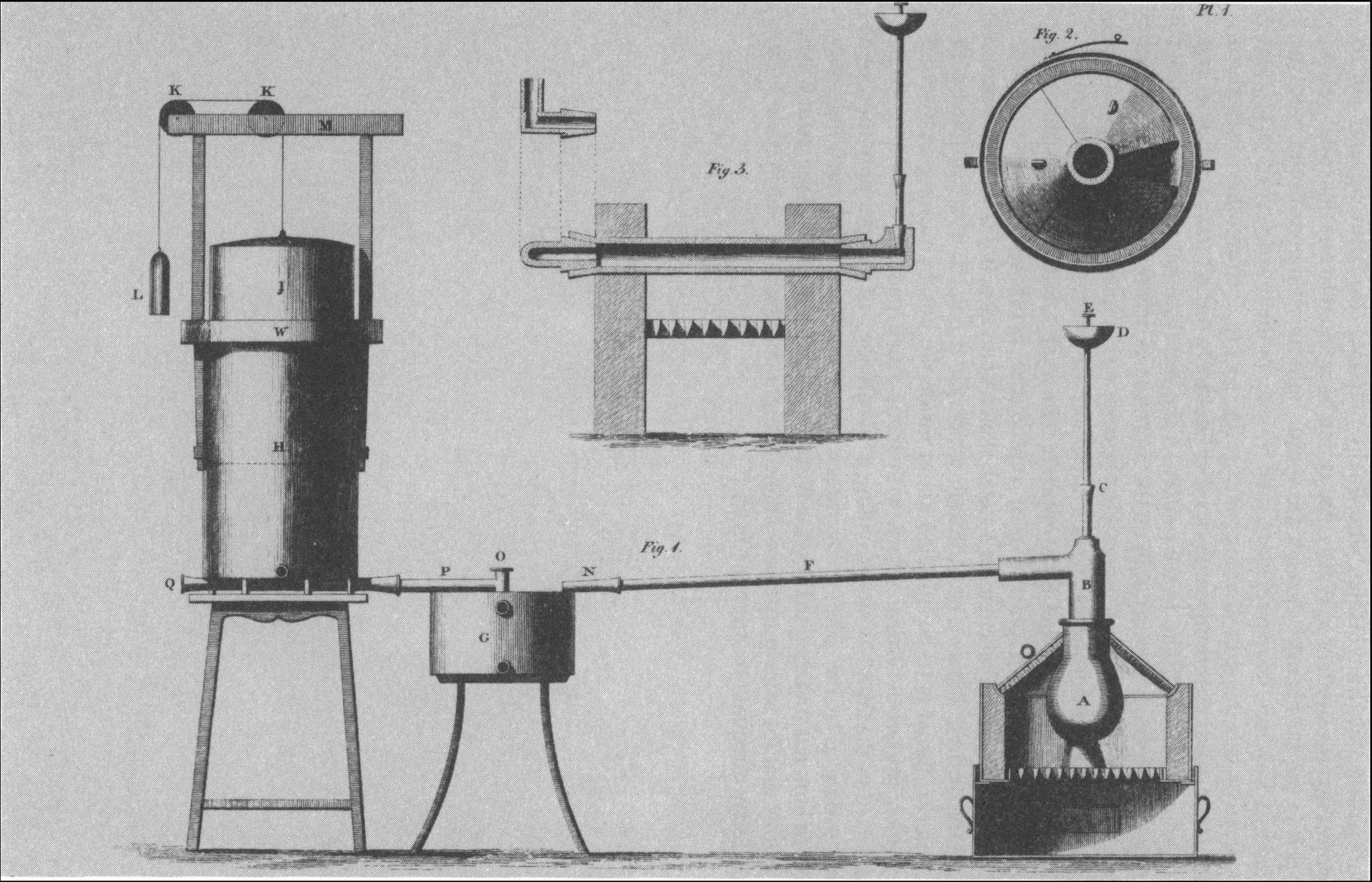
Watt-Beddoes Gasometer, 1795. Gasometer built by James Watt for Dr. Thomas Beddoes for use at the Pneumatic Institute in Bristol, England where the effects of newly discovered gases were being researched. Illustration found on Wikipedia.
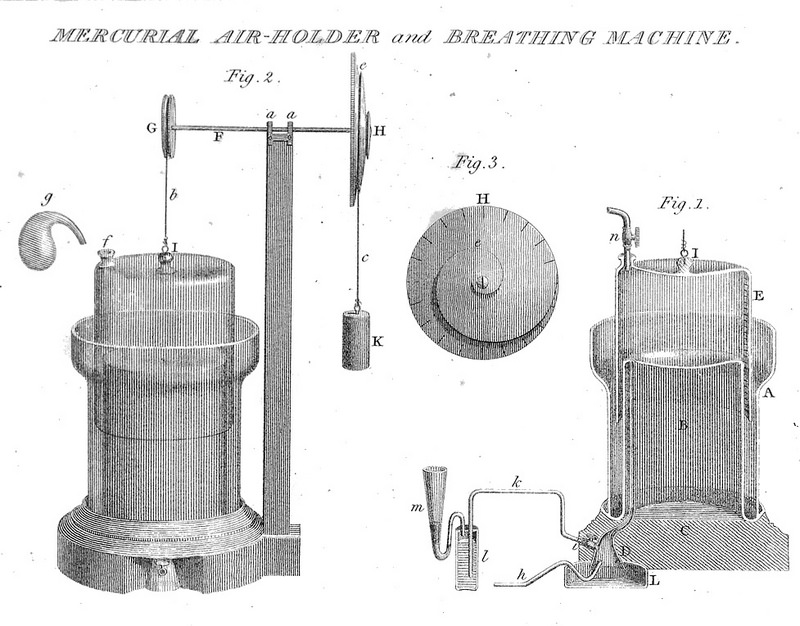
Sir Humphrey Davy’s mercury air holder, 1800. Fronticepiece for Humphry Davy’s “Researches, Chemical and Philosophical”, published in 1800. A mercury-seal gasometer that predates Hutchinson’s spirometer by over 40 years. The counterweight is attached to a cam that varies the force over the range of motion of the bell. This device was used as an air holder, not as a measuring device since the only scale for volume was a uncalibrated dial on the cam. Found on PublicDomainReview.com.
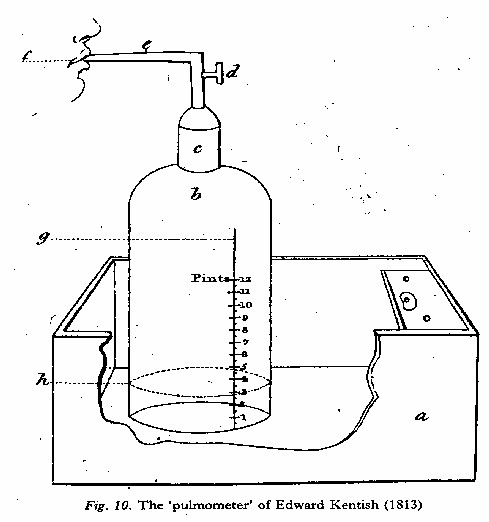
Kentish Pulmometer, 1813. Edward Kentish’s pulmometer from 1813. Found in a PowerPoint presentation Historia de la espirometría.
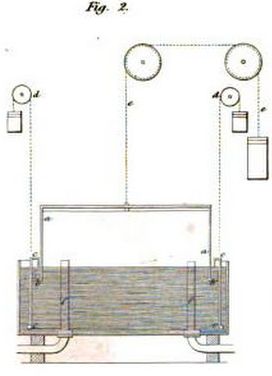
Gasometer, 1824. Gasometer used to store coal gas for lighting. From Encyclopaedia Britannica: Or, A Dictionary of Arts, Sciences, and Miscellaneous Literature, Enlarged and Improved, published 1824. From an article on Gas Lights (pp. 448-461), plate XXXIII.
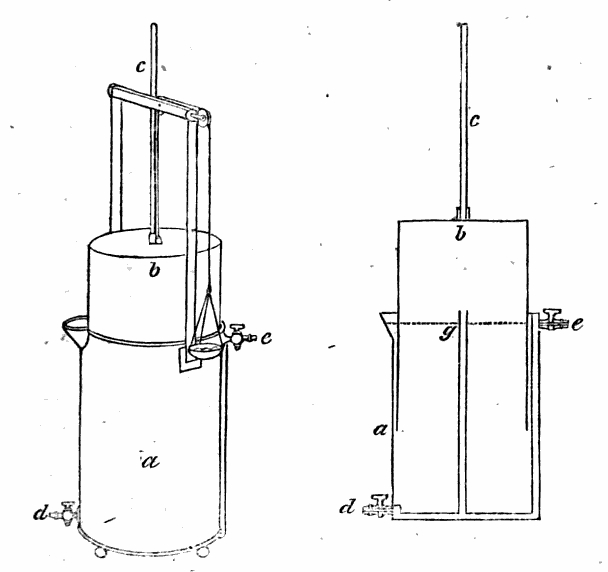
Gasometer, 1829. Hutchinson’s spirometer was based on the gasometer, a common device used by scientists, chemists and glassblowers. From Brande, William Thomas, and William James MacNeven. “A manual of chemistry; containing the principal facts of the science arranged in the order in which they are discussed and illustrated in the lectures at the Royal Institution of Great Britain. With plates.” New York, 1829,page 68.

PFT History by Richard Johnston is licensed under a Creative Commons Attribution-NonCommercial 4.0 International License.